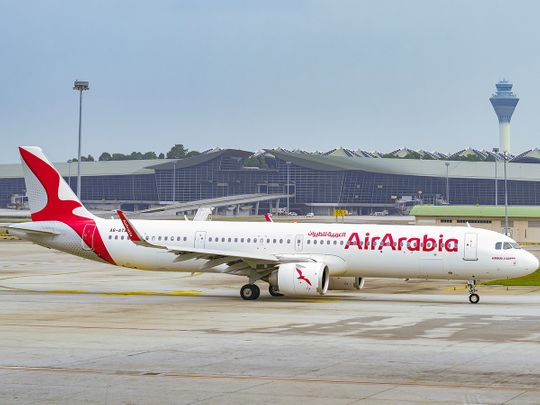
Highlights
- Air Arabia Abu Dhabi will be the first low-cost carrier based out of the UAE capital
- Etihad Aviation Group and Air Arabia announced on Wednesday an agreement to launch Air Arabia Abu Dhabi
- Sharjah-based Air Arabia already has hubs in other countries including Egypt and Morocco
- The partnership will serve Abu Dhabi’s tourism goals and contribute to the emirate’s economic growth
Dubai: Etihad Aviation Group and Air Arabia announced on Wednesday they have signed an agreement to launch Air Arabia Abu Dhabi, the first low-cost carrier based out of the UAE capital.
The two aviation companies will establish a joint venture that will operate as a budget airline based out of Abu Dhabi International Airport.
While Sharjah-based Air Arabia already has hubs in other countries including Egypt and Morocco, its presence in Abu Dhabi will be under a newly-created entity and not as an additional hub, Gulf News understands.
The board of directors of the joint venture will consist of members nominated by Etihad and Air Arabia, and the company will have an independent strategy and business mandate. The legal framework around the operation of the joint venture is yet to be established.
Tony Douglas, group chief executive officer of Etihad Aviation Group, said that the partnership will serve Abu Dhabi’s tourism goals and contribute to the emirate’s economic growth.
The two companies said in a joint statement that the new carrier will “complement Etihad Airways’ services from Abu Dhabi, and will cater to the growing low-cost travel market segment in the region.” No launch date for Air Arabia Abu Dhabi has been given, and details are yet to be announced on where the fleet and staff will come from.
Gulf News understands that passengers can expect an Air Arabia service, but from and to Abu Dhabi. Both Air Arabia and Etihad Airways will continue their operations as usual from their respective hubs.
Already, the UAE has four local carriers (Emirates, Etihad, flydubai, and Air Arabia), two of which (flydubai and Air Arabia) are low-cost, and experts have long said the market may be overcrowded, considering the UAE’s population of under 10 million people.
In 2017, Emirates and flydubai announced a partnership that includes codeshare deals and schedule alignment. Speculation has also been rife about a merger between Emirates and Etihad, especially after Etihad reported its third consecutive year of losses in 2018. Both airlines have repeatedly denied any merger talks, though, instead saying that they are working closely on back office operations.
“With the emirate’s diverse attractions and hospitality offerings, travel and tourism play a vital role in the economic growth of the capital and the UAE. By partnering with Air Arabia and launching Abu Dhabi’s first low-cost carrier, we are serving this long-term vision,” Etihad’s Douglas said.
He added that Air Arabia Abu Dhabi is part of Etihad’s transformation programme, and will supplement its existing services. Etihad has been working to transform since 2017, appointing a new chief executive officer and cutting costs and certain routes. Still, the airline doesn’t expect to turn a profit until 2023, it said, as challenges continue.
Meanwhile, Adel Ali, chief executive officer of Air Arabia, said the new carrier will “further serve the growing low-cost travel segment locally and regionally.”
Air Arabia and Etihad said low-cost air travel has been rapidly growing in the Middle East and North Africa since it was first introduced in 2003. Low-cost carriers accounted for 17 per cent of seat capacity to and from the Middle East in 2018.
The overall aviation environment in the region – and globally – is still challenging, though. According to the latest report from the International Air Transport Association (Iata), growth in global demand remains below the long-term trend amid an uncertain economic environment.
In the Middle East, airlines saw passenger traffic pick up in August to 2.9 per cent, which is better than the average of the past 12 months but still far below the double-digit growth trend of recent years.











